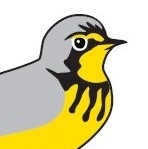15 July 2015 – Groundbreaking research into bird movements in the Western Hemisphere is uncovering critical information to guide conservation. The Motus Wildlife Tracking System enables researchers to track birds over vast distances. This spring, several thrushes were tracked from Colombia to far-flung locations in Canada and the U.S. The result: amazing new details of these birds’ habitat use at wintering and migratory stopover locations, and of their migratory flights.

Swainson’s Thrush by Nick Saunders
Motus is a program of Birds Canada. This research was made possible through collaboration with partners SELVA (Research for Conservation in the Neotropics), University of Saskatchewan, Universidad de los Andes, Environment Canada, and Acadia University. In March and April 2015, 67 Swainson’s Thrushes and Gray-cheeked Thrushes were outfitted with radio-transmitters in Colombia. Researchers collected real-time data on their local movements in the Colombian Andes and Sierra Nevada de Santa Marta mountain ranges. They also obtained a phenomenal record of the birds’ habitat use and length of stay in specific areas.
Four of these individuals were subsequently detected by Motus stations during their northbound spring migration, and a fifth on its breeding grounds on the coast of Hudson Bay. In one remarkable example, a Swainson’s Thrush tagged on March 19 remained at the study site, a shade-grown coffee plantation, until April 14. On May 18, it was detected flying by a small array of towers operated by the University of Saskatchewan and Environment Canada in Chaplin Lake, Saskatchewan. The thrush made an astounding journey of nearly 6000 km in just 34 days, flying at least 175 km per day for a month!
Another Swainson’s Thrush was detected during migration in coastal Texas (on a small array operated by the Coastal Bend Bays & Estuaries Program). Motus stations operated by Birds Canada picked up a third along the north shore of Lake Ontario.
Two Colombia-tagged Gray-cheeked Thrushes were detected in Ontario. One, detected on the north shore of Lake Ontario, travelled 3674 km in 13 days – an impressive average of more than 280 km a day! The other flew 5300 km north to breeding grounds near Hudson Bay, and was detected one month after departing a Colombian study site. Further discoveries are expected as the season progresses and data continue to come in.
 Learn more about these birds’ journeys, including details of their flight paths and speeds, on our animated map.
Learn more about these birds’ journeys, including details of their flight paths and speeds, on our animated map.
The open and collaborative network provided by Motus makes these exciting discoveries possible. As the Motus program continues to develop, findings (and impacts to bird conservation science) will continue to grow. Automated radio telemetry systems used by Motus can provide an unprecedented level of detail about an individual bird’s behaviour, activity, and general position on the landscape. And this information is available to researchers within days of detections, rivalling even the most advanced satellite tracking technology.
This research team is comprised of Ph.D. candidates Camila Gomez (Universidad de los Andes) and Ana Gonzalez (University of Saskatchewan), Dr. Nick Bayly (SELVA), Dr. Daniel Cadena (Universidad de los Andes), Dr. Keith Hobson (Environment Canada), Dr. Phil Taylor (Birds Canada Chair of Ornithology at Acadia University), and Stu Mackenzie (Birds Canada). For their roles in supporting this research, Birds Canada also thanks Swarovski Optik, BirdLife International, the Natural Sciences and Engineering Research Council of Canada, Western University, the University of Guelph, the Canada Foundation for Innovation, and all participating landowners.
This project was undertaken with the financial support of the Government of Canada.
To learn more, please contact Birds Canada’s Motus Program Manager Stu Mackenzie at smackenzie@birdscanada.org.

